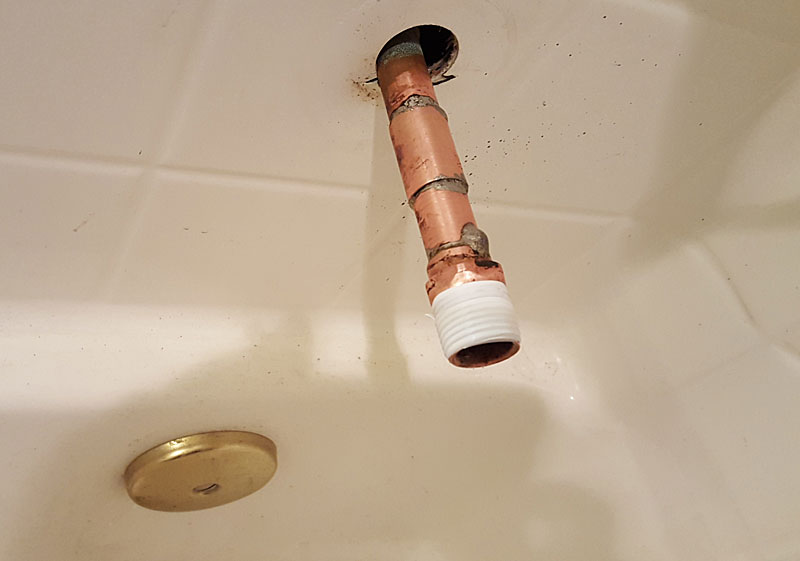


Here, it’s also a good idea to check that your wall studs are large enough to drill in. Line them up along the wall to the faucet. Then, measure the exact distance inside the walls. Use a flat screwdriver and a hammer to pry the drywall up and take care not to damage it. Remove the baseboards along all walls that require pipes. Use a marker that you cannot rub away to trace around the fittings on the back. Measure where the fitting should be, use a level to ensure it’s flat, and mark the spot with blue chalk, pen, or marker. Take your faucet and decide where you want it in the bathroom. Normally, it’s a best practice to find the closest mains pipe to the new faucet and divert the line from there. One from the hot water source and one from the cold-water source. Buy your pipe and fittings based on these measurements.You’ll almost certainly need a male connector. Normally, it will be ¾ inch or 1 inch and you’ll want to reduce it to 3/8ths. If not, you’ll have to turn off the main water and connect a T. Check if the main line already has a Y or split off of it.Measure the distance of each length in between turns.

Tub spout extender install#
You want to install pipes inside the wall to keep them out of sight. Make note of any corners and be sure to buy appropriate elbows for these turns. Use a tape measure to measure the distance between the main line and the faucet connection.If not, you might have to run them a significant distance to the new tub location. If you’re replacing an old faucet, those pipes are already in place. In this case, you have to find the hot water line and the cold-water line. The first step to installing your bathroom faucet is to figure out where you’re connecting it to the water lines. Check what’s already in your bathroom + fittings to connect to the main line. Drill set compatible with your faucet, usually Phillips #2.Drill with a Forstner or spade bit set, at minimum 5/8ths Forstner bit and ½-inch Forstner bit.Pencil or chalk line (preferably blue chalk).You might also want to consider draining any excess water into the sink or toilet to prevent leaking on the floor. Make sure your water is turned off to the bathroom before doing any work involving pipes or water lines. That means the water lines from the main water supply to the tub and the holes for the faucet. In this case, the instructions are only for roughing in the water faucet. In this guide, we’ll cover each step in order, including basic safety to ensure your wall remains sturdy. This normally involves a rough process of laying out pipes, cutting holes, and fitting the plumbing into the wall. Roughing in a bathtub spout is the process of boring holes in the wall, studs, and frame and running water supply through those holes. What do you do if your tub spout is too short?.


 0 kommentar(er)
0 kommentar(er)
